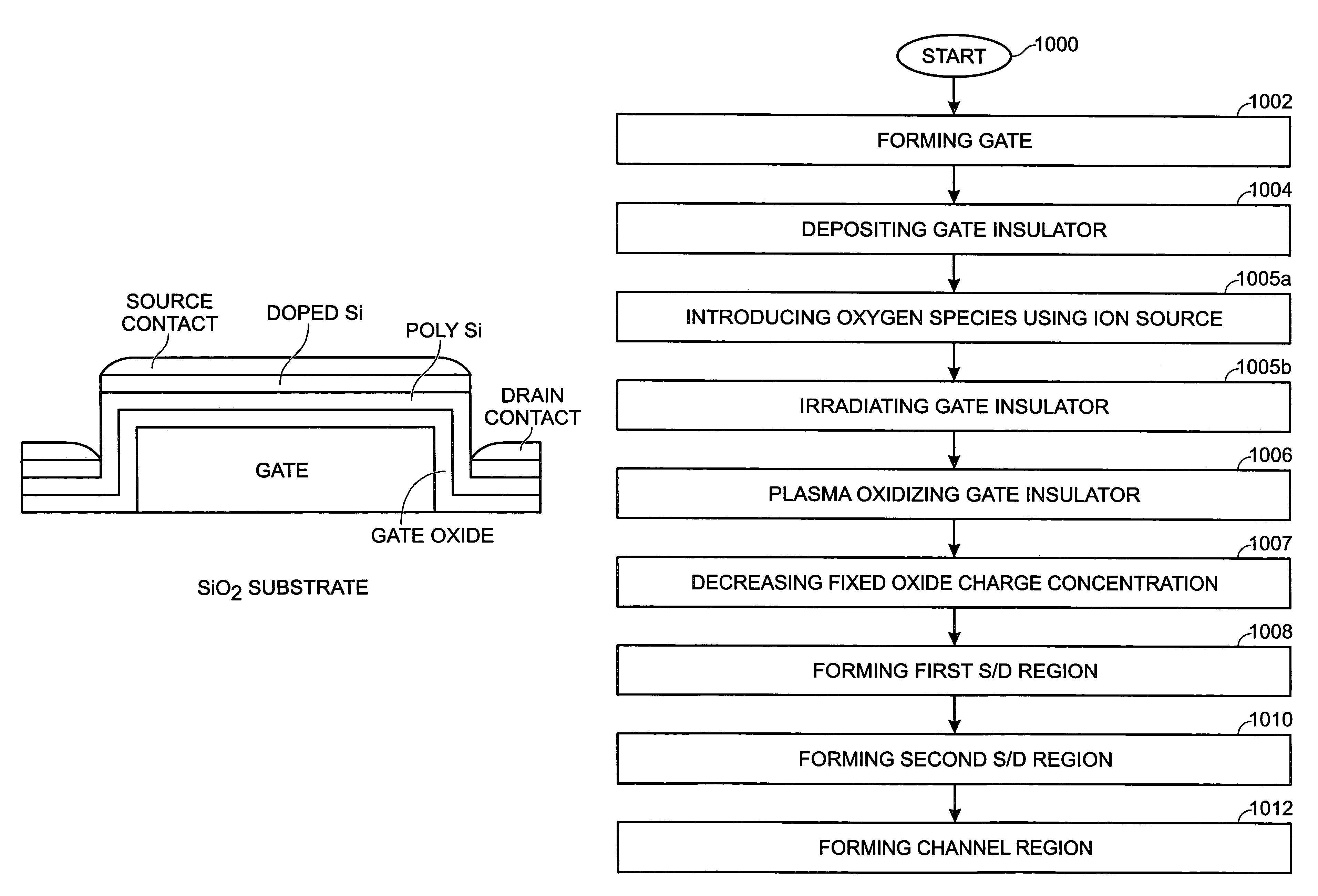High-density plasma oxidation for enhanced gate oxide performance
a gate oxide and high-density plasma technology, applied in the field of gate oxide, can solve the problems of poor electrical performance of oxide or sub-oxide thin-films, thermal oxidation process is not suitable for low-temperature devices, and vacancies or defects, so as to improve bulk and interfacial quality, promote efficient oxidation of oxide thin-films, and reduce thermal budget
- Summary
- Abstract
- Description
- Claims
- Application Information
AI Technical Summary
Benefits of technology
Problems solved by technology
Method used
Image
Examples
Embodiment Construction
[0035]FIG. 1 is a partial cross-sectional view of a vertical thin-film transistor (V-TFT) device. The V-TFT 100 comprises a substrate 102 and a substrate insulation layer 104 overlying the substrate 102. Generally, the substrate 102 can be a material such as glass, silicon, or plastic. The substrate 102 can also be a temperature-sensitive transparent glass, quartz, or plastic material.
[0036]A gate 106, having vertical sidewalls 108 and a top surface 110, overlies the substrate insulation layer 104. A silicon oxide thin-film gate insulator 112 overlies the gate top surface 110 and sidewalls 108. The gate insulator 112 has a step-coverage of greater than 65%. Step-coverage is defined as the ratio of a vertical aspect thickness 113a, to a planar (horizontal) thickness 113b. As shown, the oxide thickness 113a over the sidewalls 108 is being compared to the oxide thickness 113b over the gate top surface 110. Poor step-coverage results in a relatively thin layer of oxide overlying corner ...
PUM
| Property | Measurement | Unit |
|---|---|---|
| temperature | aaaaa | aaaaa |
| thickness | aaaaa | aaaaa |
| frequency | aaaaa | aaaaa |
Abstract
Description
Claims
Application Information
 Login to View More
Login to View More - R&D
- Intellectual Property
- Life Sciences
- Materials
- Tech Scout
- Unparalleled Data Quality
- Higher Quality Content
- 60% Fewer Hallucinations
Browse by: Latest US Patents, China's latest patents, Technical Efficacy Thesaurus, Application Domain, Technology Topic, Popular Technical Reports.
© 2025 PatSnap. All rights reserved.Legal|Privacy policy|Modern Slavery Act Transparency Statement|Sitemap|About US| Contact US: help@patsnap.com



